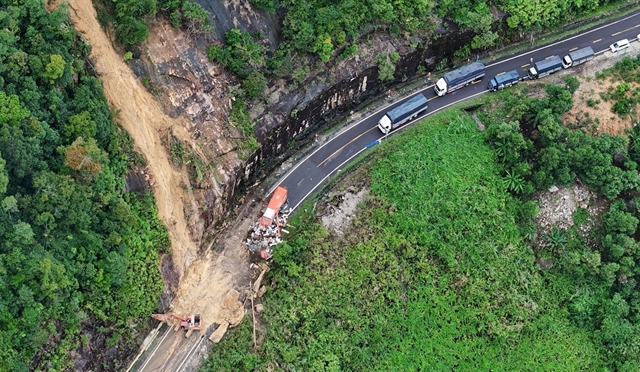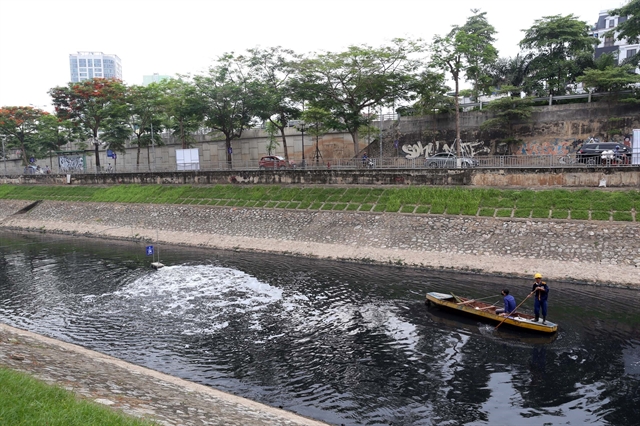 Environment
Environment

The noxious odour and level of mud in the Tô Lịch River and West Lake in Hà Nội have decreased dramatically since nano-bioreactor technology has been applied, according to a representative of the Japan Environment and Trade Promotion Organisation (JETRO).

|
| Tô Lịch River water has become cleaner after being treated with Japanese technology. — VNA/VNS Photo Huy Hùng |
HÀ NỘI — The noxious odour and level of mud in the Tô Lịch River and West Lake in Hà Nội have decreased dramatically since nano-bioreactor technology has been applied, according to a representative of the Japan Environment and Trade Promotion Organisation (JETRO).
The mud on the riverbed has fallen from 91.3cm to 15cm. In West Lake, the level reached zero, said Tadashi Yamamura, JETRO president.
The quality of water where Koi fish have been released has met all 36 Vietnamese standards.
The bad odour from the Tô Lịch River and West Lake had also decreased significantly.
Minister of Natural Resources and Environment Trần Hồng Hà and the ministry’s experts on Wednesday visited West Lake to inspect the results of the Japanese water treatment technology.
The minister said the Japanese technology is good because it can treat mud in the ponds and lakes without having to dredge them. The ministry is considering adapting the technology for Vietnamese wastewater, as well as finance for the project.
“If the technology meets the criteria, the ministry will consider applying it widely in Việt Nam,” he said.
Tadashi Yamamura, JETRO president, told Vietnam News Agency Television (Vnews) if the technology is widely applied in Việt Nam, the country will only need to invest in the initial costs. The technology itself will then do the work. It is not costly, because it does not require added chemicals, just water and electricity.
The municipal People’s Committee and relevant agencies are assessing the efficiency of the trial project in order to decide whether to apply it widely or not.
In May, the Japanese nano-bioreactor technology was applied to a section of Hà Nội’s polluted Tô Lịch River and West Lake – the city’s largest lake.
The device creates and diffuses nano-gas streams into the surrounding water to stimulate microorganisms, which helps to release oxygen and decompose the mud in the riverbed, making the water cleaner.
In September, Japanese carp, often called Koi, and Vietnamese carp were released into the Tô Lịch River and West Lake as a demonstration of how clean the water is after a five-month trial of the Japanese technology. — VNS




